Fallingwater, the house designed by American architect Frank Lloyd Wright for Edgar Kaufmann in southwestern Pennsylvania, hangs over a waterfall using the architectural device known as the cantilever. Wright described his architectural style as "organic"--in harmony with nature, and though Fallingwater reveals vocabulary drawn from the International style in certain aspects, this country house exhibits so many features typical of Wright's natural style, the house very much engaged with its surroundings.
Fallingwater has provided enjoyment to many people over the years; as a stimulating weekend retreat for the Kaufmann family and their friends, as a source of pride to the architect and his associates, and now - cared for by the Western Pennsylvania Conservancy - as an exceptional experience for visitors from near and far....
When Wright came to the site he appreciated the powerful sound of the falls, the vitality of the young forest, the dramatic rock ledges and boulders; these were elements to be interwoven with the serenely soaring spaces of his structure. But Wright's insight penetrated more deeply. He understood that people were creatures of nature, hence an architecture which conformed to nature would conform to what was basic in people. For example, although all of Fallingwater is opened by broad bands of windows, people inside are sheltered as in a deep cave, secure in the sense of hill behind them. Their attention is directed toward the outside by low ceilings; no lordly hall sets the tone but, instead, the luminous textures of the woodland, rhythmically enframed. The materials of the structure blend with the colorings of rocks and trees, while occasional accents are provided by bright furnishings, like wildflowers or birds outside. The paths within the house, stairs and passages, meander without formality or urgency, and the house hardly has a main entrance; there are many ways in and out. Sociability and privacy are both available, as are the comforts of home and the adventures of the seasons. So people are cosseted in to relaxing, into exploring the enjoyment of a life refreshed in nature. Visitors, too, in due measure experience Wright's architecture as an expansion of living. 1
Take a virtual tour of Fallingwater by visiting the Fallingwater pictures pages.
![[Pictures of Fallingwater Photos visit button]](../frank-lloyd-wright/fallingwater-pictures/thumbnails_fallingwater/visit-fallingwater-photos-s.jpg) You'll find descriptions and information about various parts of the house over the waterfall designed by Frank Lloyd Wright, one of the foremost architects of all time.
You'll find descriptions and information about various parts of the house over the waterfall designed by Frank Lloyd Wright, one of the foremost architects of all time.
Fallingwater opened a new chapter in American architecture, and is perhaps rightly considered Wright's greatest work, for he was first and foremost an architect of houses. In its careful yet startling integration of stone walls anchored to the bedrock and modern reinforced concrete terraces hovering in space, Connors states that Fallingwater may be understood as 'one of the great critiques of the modern movement in architecture, and simultaneously one of its masterpieces'. Yet we cannot help feeling that there is more to this design than even that; this is an architecture that seizes our imagination, letting us see space and habitation in ways that seem new, but which we simultaneously feel to be ancient, somehow fundamental to our human nature. 2
Fallingwater is famous; from all over the world many thousands of visitors come each year to its remote site. What draws them? - a most unusual house in an exceptionally picturesque setting and something more, a reputation.
In 1936, even before it was finished, knowledgeable people talked about this new work of Frank Lloyd Wright....
After a time a consensus arose that Wright had created a masterwork that appealed not only to professionals but to the public generally. Fallingwater was not much like the earlier architecture that had made Wright famous; it was just as distant from the avant-garde styles of the 1930s, and surely like any popular "dream house." Yet now that Fallingwater has been tested by half-a-century of the widest exposure, one can say that it marks a high point in Wright's vast oeuvre, in American architecture, in the architecture of this century, and possibly in all architecture. 3
|
Please link to this page's updated (and permanent) web address: www.wright-house.com/frank-lloyd-wright/fallingwater.html |
see Photos of Fallingwater
Fallingwater from Crist—bal Vila on Vimeo.
Recommended Books:
|
Editorial Review from Library Journal (excerpt): An engaging, intimate, sumptuous appreciation of Wright's 1936 house in Bear Run, Pennsylvania. Kaufmann is the distinguished architectural historian who trained with Wright and is the son of the clients for Fallingwater, the most famous modern house in America. He is able to explain the intentions of architect and client, and writes with both feeling and critical knowledge, having lived in and with the masterpiece all his life. The rich color photographs....
|
|
Frank Lloyd Wright's Fallingwater: The House and Its History (Dover Books on Architecture) by Donald Hoffmann, Edgar Kaufmann (Designer) Review by Book News: New edition of a fine account of Wright's most famous house. Covers site maps, planning, construction and finishing. A fine production at a minimal price. -- Book News |
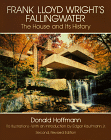
|
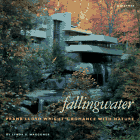
|
Fallingwater: Frank Lloyd Wright's Romance With Nature by Lynda S. Waggoner, Western Pennsylvania Conservancy
Customer Review:
Excellent introduction to Frank Lloyd Wright. |
|
Fallingwater Using 3d Studio: A Case Study and Tutorial/Book and Disk by Laura Sanchez, Alex Sanchez (Contributor) Review excerpt: This is a unique book....it combines a historical study of a famous structure (The Fallingwater house that Frank Lloyd Wright built for the Kaufmanns in the 1930s) with a discussion of applied architectural rendering with 3D Studio. The first chapter of the book covers the history of the house, complete with photographs and construction details. This is a fascinating story that is well told, and a breath of fresh air for a reader used to dry tutorials. Following that, the book details the approach taken to model the various elements of the house. --Jim Lammers |
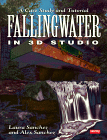
|
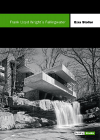
|
Frank Lloyd Wright's Fallingwater (The Building Blocks Series) by Ezra Stoller (Photographer) Series Description: The new Building Blocks series presents icons of modern architecture as interpreted by the most significant architectural photographers of our time. The first eight volumes feature the work of Ezra Stoller, whose photography has defined the way postwar architecture has been viewed by architects, historians, and the public at large. |
![[Fallingwater]](../frank-lloyd-wright/fallingwater-pictures/fallingwater-1small.jpg)
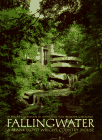
![[LEGO Fallingwater]](../frank-lloyd-wright/amazon/Lego-fallingwater-si.gif)

![[Fallingwater]](fallingwater-pictures/fallingwater-2small.jpg)
![[Wright house Library icon]](../images/Pin_Library.GIF)
![[Wright house Help Desk icon]](../images/pin_info2.gif)
![[Wright house HOME icon (Fallingwater)]](../images/SmHome.GIF)